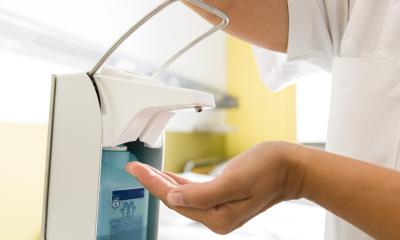Nosocomial infections in the USA
By Cynthia E Keen
As nosocomial, or healthcare-related infections (HAIs), continue to escalate in the US, and protocols to manage this problem remain complex and confusing, surveillance healthcare IT systems offer hope to gain control of the situation. These offer the potential for data to be uniformly collected, quantified, and assessed. How rapidly they will be implemented enough is unknown.
Lead author Dr Gary Noskin, of Northwestern Memorial Hospital in Chicago, estimated that the cost to treat staph infections alone increased from $8.7 billion in 1998 to $14.5 billion in 2003. His source of data originated from a National Inpatient Sample Database containing data from seven million annual patient visits.
A study by University of Alabama researchers (pub: Medical Care. 1/08) utilised data from over 1,300,000 hospital admissions to 55 hospitals for a five-year period (2001-2006). The hospitals were representative in size of the mix typical throughout the US, from 50 to 1,000 beds, located in urban, suburban and rural communities.
Data, including actual hospital costs had been uniformly collected by a healthcare IT data analysis company. Using this database, it was possible to determine accurately the number of HAIs and their cost in 2007 dollar values.
A total of 58,381 (4.3% of the total) infections were identified. Out of 99,445 re-admissions of previously hospitalised patients, 7,501 were due to an infection acquired during the previous stay.
The additional average total cost relating to the infection was $7,007 in added variable cost, $12 in added total cost, and 5.4 extra in-patient days. The majority of infections were urinary tract (32.4%) costing $3,936, blood (21.5%) costing $12,774, respiratory (18.3%) costing $24,408 and wound (14.3%) costing $7.059.
Clearly, the cost to treat HAI infections is a huge waste and a travesty as the cost of US healthcare treatment continues to soar. As of October 2008, Medicare, which pays for the healthcare of 43 million people over aged 65, has stated that it will stop reimbursing hospitals for three types of preventable infections, which include urinary and vascular catheter infections. This will have a ripple effect, because US healthcare insurance companies typically follow the lead of Medicare.
New GAO report criticises federal health agencies
In April 2008, the General Accounting Office (GAO), the ‘watchdog’ over US federal agencies, issued a report about infection control to Congress. This detailed how four different US agencies within the Health and Human Services Department (HHS) all collect data, but collect different types of data about different subsets of patients. About 500 hospitals report data on infection rates. 14 states require that data be reported to HHS and 16 states have legislation pending to do so.
The GAO’s very critical report stated that none of these agencies were taking any steps to integrate any of the data from the four huge databases or communicate effectively with each other. The report concluded that ‘HHS could not use its databases to provide reliable national estimates of HAI rates, even for the selected types of HAI being monitored, because none of the databases collect data on the incidence of HAI for a nationally representative sampling of patients.’
The GAO identified over 1,200 recommended practices to be followed by hospitals, clinics, and long-term care facilities to prevent infection. 500 of these are strongly recommended. The GAO pointed out that this huge number has hindered efforts to promote their implementation, and recommended that realistic priorities be established that can be reasonably followed.
MRSA
According to the respected Society for Healthcare Epidemiology of America, antibiotic-resistant MRSA acquired in the community is increasingly the cause of infections transferred to hospitals. The drug corporation Pfizer, Inc. estimates the nationwide cost for MRSA-hospitalised patients to be $3.2-$4.2 billion.
In Illinois, New Jersey and Pennsylvania, state legislation requires that high risk patients and those in ICUs be tested for MRSA. At least eight other state legislatures are debating this. Testing of patients is a very contentious issue, and has divided the medical community. Screening is expensive. Opponents do not believe that screening and isolation is preventing the spread of MRSA.
Legislation was introduced in 2007 in the US Congress called the STAAR Act to create an Office of Antimicrobial Resistance, fund research, collect data and establish research. While many hearings have been held, it must be passed by August, due to election year politics, and controversy is associated with animal-related provisions that may cause it to fail.
Surveillance IT
Meanwhile, hospitals with electronic patient records (EPR) are increasingly starting to utilise commercial healthcare IT surveillance services. One such service, from Cardinal Health, uses a Nonsocomial Infection Marker to provide hospitals with a report of HAIs by type and location throughout a healthcare facility and specifically identifies MRSA. By using specialised data mining and artificial intelligence software, it constantly evaluates EPR data in real time, and alerts administrators to issues of concern or abnormal incidents indicative of infection outbreaks.
The software is similar to that used by credit card companies to monitor purchases for fraud, and identifies patterns indicative of specific and correctable quality breakdowns. Cardinal Health states that its software identifies clinically relevant issues that should be investigated, provides situation-specific, evidence-based practice recommendations, and provides follow-up documentation of the corrective action’s impact based upon the continuous monitoring.
This IT tool brings hope of an efficient means to fight infection in hospitals at its source. It would not exist without the infrastructure of EPRs, and is still a relatively new technology. Combined with the old-fashioned remedy of repetitive hand washing, it seems to be one of the best tools available to help tackle this huge, expensive and dangerous problem.
01.07.2008





